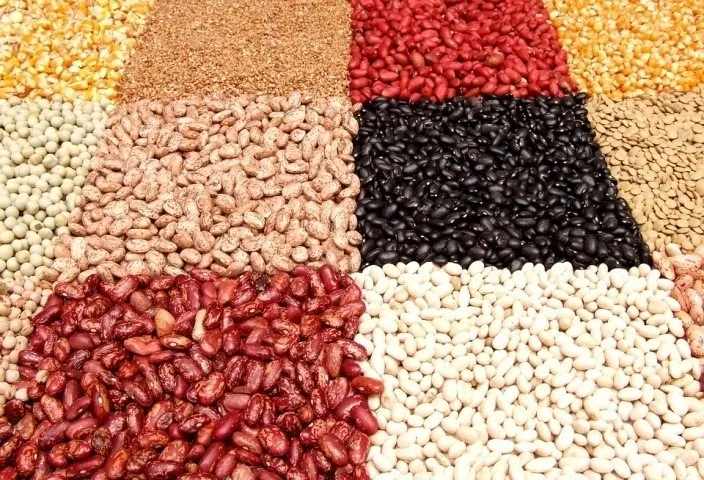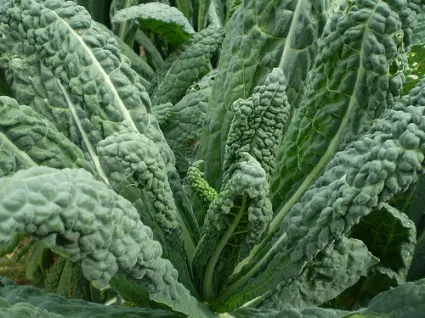The Top Antioxidant Foods You Should Be Eating
Every single day, we are faced with free radicals coming from our environment. This could be from pollution, the food we eat, even the stress we experience at work. Luckily, there are ways through which we can defend our bodies from it—that’s what antioxidants do. These fight off and prevent and potential damage to our cells due to free radicals.
Why are free radicals problematic? Well, when these begin to increase in number within the body they can cause what’s known as oxidative stress—this, in effect, can damage important structures within your cells and may even affect your DNA as well. Oxidative stress is also known to increase your risk of developing type 2 diabetes, heart disease, and cancer.
To keep this from happening, you need to add more antioxidant-rich foods into your diet. Doing so would help increase antioxidant levels in your body which will effectively fight off the effects of oxidative stress. But, which foods should you be eating? What you need to look for is the FRAP value of the food items you choose. The higher the value, the higher the antioxidant content.
That said, here’s what you should be adding more of to your grocery list:
DARK CHOCOLATE

Got a sweet tooth? You’d be glad to know that cocoa contains plenty of minerals and antioxidants that are good for your body. We’re talking dark chocolate—the higher the cocoa content, the more antioxidants you’ll be getting per serving. That’s 15mmol for every 100g that you eat of it. Compared to other popular antioxidant berries such as raspberries and blueberries, dark chocolate contains nearly twice the amount of antioxidants.
Studies show that eating dark chocolate daily has plenty of health benefits as well—from helping with decreasing inflammation to even reducing your risk level for heart disease. This is due to the fact that it can increase HDL levels in our bodies, whilst also keeping LDL from being oxidized. Will your regular bar of milk chocolate do the same? Not quite. If you want to reap these health benefits, opt for 70% or higher cocoa content.
PECANS

A favorite snack for the health-conscious, pecans are not only rich in antioxidants but it’s loaded with healthy minerals and fats as well. This is why it’s the favorite healthy snacking alternative for people who are on a diet or those who want a break from cholesterol-laden chips.
Based on one study, people who regularly got 20% of their daily caloric total from pecans were able to benefit from increased antioxidant levels in their blood. Not surprising, given its 10.6mmol antioxidant content for every 100g serving. Much like dark chocolate, pecans are also capable of preventing LDL oxidization. In a different study, people who ate pecans as part of their daily diet saw a 26 to 33% decline in their LDL levels within hours!
One thing to note about consuming pecans is that they are high in calories—therefore, moderation is key. 100g once a day should be enough to help you reap all the great health benefits it can deliver without risking caloric overload.
SPINACH

Moving on to leafy greens, spinach is considered a superfood by many considering how nutrition-packed it is. But did you know that it’s got plenty of antioxidants as well? And unlike pecans, this one’s low in calories so you can eat as much as you want. Good thing it’s also very versatile so it can be added to many different dishes—a true healthy pantry staple.
Its FRAP value is at 0.9mmol per 100g and given that you can eat as much of it as you want, having it for every meal can help boost that antioxidant value even further. Spinach is rich in zeaxanthin and lutein, two types of antioxidants that specifically protect our eyes from free radicals and prevent any damage it might cause in the long-term. If you want to maintain your 20-20 vision, add more of it to your daily diet.
BEETS

Beets are well-known for their rich red color, but did you know that the very component that’s responsible for that is a potent antioxidant? Betalains have been shown to help with lowering cancer risk, especially for the digestive tract and the colon.
Its FRAPP value is 1.7mmol per 100g and because they’re low in calories, you can consume it to your heart’s content. Besides, aside from tasting great and versatile, it also packs a punch when it comes to nutrition. Beets are a great source of iron, fiber, folate, and potassium to mention a few.
They can also help with different types of inflammation, including arthritis.
BEANS

Health, delicious, versatile—and inexpensive. Beans are a staple food for many households and it’s no wonder, given just how nutritious it can be. Aside from being high in antioxidants, it is also rich in fiber which helps with regular bowel movement.
Pinto beans, in particular, contain an antioxidant called kaempferol which is known to help with suppressing cancer growth and reducing chronic inflammation. In animal tests, it has proven to be effective in suppressing cancers in the lungs, bladder, breast, and kidneys.
The FRAP value for green broad beans is at 2mmol for every 100g.
BLUEBERRIES

Another low-calorie and high in antioxidant option, blueberries are a must in every health-conscious person’s fridge. In fact, among the fruits and vegetables on this list, it’s got the highest FRAP value at 9.2mmol per 100g—coming second to dark chocolate. Let’s not forget that it packs quite a lot of nutrition into your snacks and breakfast oats as well.
Studies also show that blueberries might be able to help in delaying the inevitable decline in brain function that people experience due to old age. Aside from this, its antioxidant content can reduce risk factors for different heart-related diseases, including lowering blood pressure and LDL levels.
STRAWBERRIES

Aside from being a rich source of vitamin C, strawberries are also a great source of antioxidants. They have a total FRAP value of 5.4mmol for every 100g—and given the fact that they’re among the most accessible and versatile berries available, there’s no reason why you shouldn’t be adding this to your daily diet.
It gets its delicious red color from anthocyanins, known antioxidants, which can help with lowering LDL levels in the body whilst raising HDL. Studies show it also helps with risk reduction for heart disease. The redder the strawberry, the higher its anthocyanin content.
ARTICHOKES

Artichokes are a favorite for many, given their rich content of minerals and dietary fiber. In fact, they were also in ancient times as a remedy for jaundice! Aside from that, they are also rich in chlorogenic acid—a potent antioxidant that can help with inflammations and in reducing risks for certain cancers, heart disease, and type 2 diabetes.
Whilst these veggies are versatile enough to be eaten with every meal, do note that how you prepare them can affect its antioxidant content. For example, boiling them will raise the antioxidant content by 8 times. Steaming with increase it by 15 times, but frying will reduce it. Its base FRAP value is at 4.7mmol for every 100g.
GOJI BERRIES

Goji berries have been in use for traditional Chinese medicine since ancient times. Today, however, it is often referred to as a superfood because of its rich nutrient content. When it comes to antioxidants, it also packs quite a punch. It is rich in lycium barbarum polysaccharides which are antioxidants known to help with combatting skin aging and reducing risks of cancer and heart disease.
Not to mention the fact it is capable of increasing blood antioxidant levels up to 57% when consumed daily. It has a FRAP value for every 4.3mmol for every 100 grams and because it’s low in calorie content, you can have it as a healthy alternative to your usual snacks. The only downside, however, is the fact that it can be very expensive.
KALE

The flagship healthy green that diet conscious people often praise, kale certainly lives up to the hype. It is rich in different vitamins such as A, K, and C. When it comes to calcium, it is one of the best plant-based sources for it. For antioxidants, its FRAP value is at 2.7mmol for every 100g you consume. That number may increase further, depending on the variety of kale you’re eating.
For example, redbor and Russian kale contain about twice the amount of antioxidants at 4.1mmol for every 100g. Note that it is anthocyanin that gives these kale varieties their red color—so the more vibrant they are, the higher the antioxidant content.
RASPBERRIES

Taken as a smoothie, eaten as part of breakfast, or as a dessert—raspberries are so versatile, they can be added to your daily diet easily. Luckily, they are both delicious and nutritious making it one of the best sources of vitamin C, dietary fiber, manganese, and antioxidants. In fact, it contains about 4mmol for every 100g.
Studies show that the antioxidants in raspberries can help with lowering the risks of heart disease and cancer. In a test-tube study, these same antioxidants were able to kill off 90% of colon, stomach, and breast cancer cells in the given sample.
RED CABBAGE

With 2.2mmol for every 100g, red cabbage contains four times the antioxidant amount of your usual cooked cabbage. Not only that, it is also very nutritious and is rich in vitamins C, K, and A. As we have established, the red in this cabbage is due to anthocyanins—a type of antioxidant that can also be found in raspberries, red kale, and strawberries.
When it comes to health benefits, its vitamin content helps in strengthening the immune system whilst keeping our skin healthy as well. The antioxidants in red cabbage are known to help lower risks of cancer and heart disease.
Much like artichokes, preparation affects its antioxidant content significantly. Stir-frying and boiling help boost it, but steaming can reduce the amount by up to 35%.
Ready to make a new grocery list for yourself? Remember, we face the threat of free radicals every single day so it only makes sense that we protect ourselves from it. Add more antioxidants into your daily diet and stay healthy!
